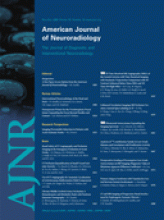Abstract
BACKGROUND AND PURPOSE: Although radiation skin injuries associated with interventional radiology have been known as a critical issue, there are few reports mentioning direct measurement of the entrance skin dose (ESD). Thus, the purpose of this study was to clarify the regional distributions of ESDs in neurointervention.
MATERIALS AND METHODS: Using photoluminescence glass dosimeters (PLDs), we measured the ESDs in 32 patients with a median age of 61.5 years. Angiographic parameters, including exposure time, dose-area product (DAP), and the number of digital subtraction angiography (DSA) studies and frames, were recorded. The ESDs of operators were analyzed by the same method.
RESULTS: The maximum ESD of 28 therapeutic procedures was 1.8 ± 1.3 Gy. Although the averaged ESD on the right temporo-occipital region was higher than that in other regions, disease-specific patterns were not observed. Statistically positive correlations were found between the maximum ESD and exposure time (r = 0.5283, P = .005), DAP (r = 0.7917, P < .001), the number of DSA studies (r = 0.5636, P = .002), and the number of DSA frames (r = 0.8583, P < .001). As for operators, ESDs to the left upper extremity were significantly higher than those to other regions. However, most of the ESDs were <0.2 mGy. Lead protective garments reduced the exposure doses to approximately one half to one tenth.
CONCLUSION: It was shown that the regional ESD could be measured by applying the PLD. This method should contribute to reducing the dose accumulation in patients as well as in operators.
- Copyright © American Society of Neuroradiology












